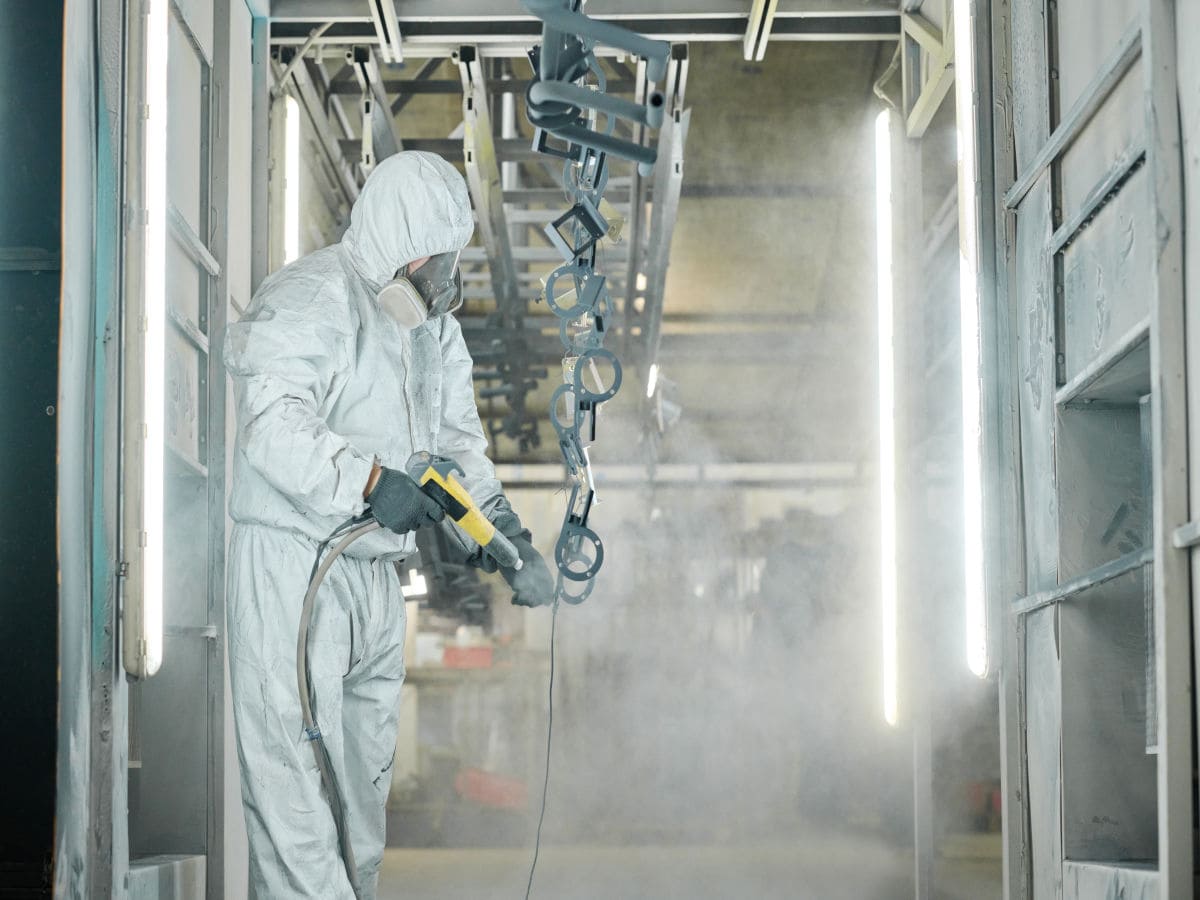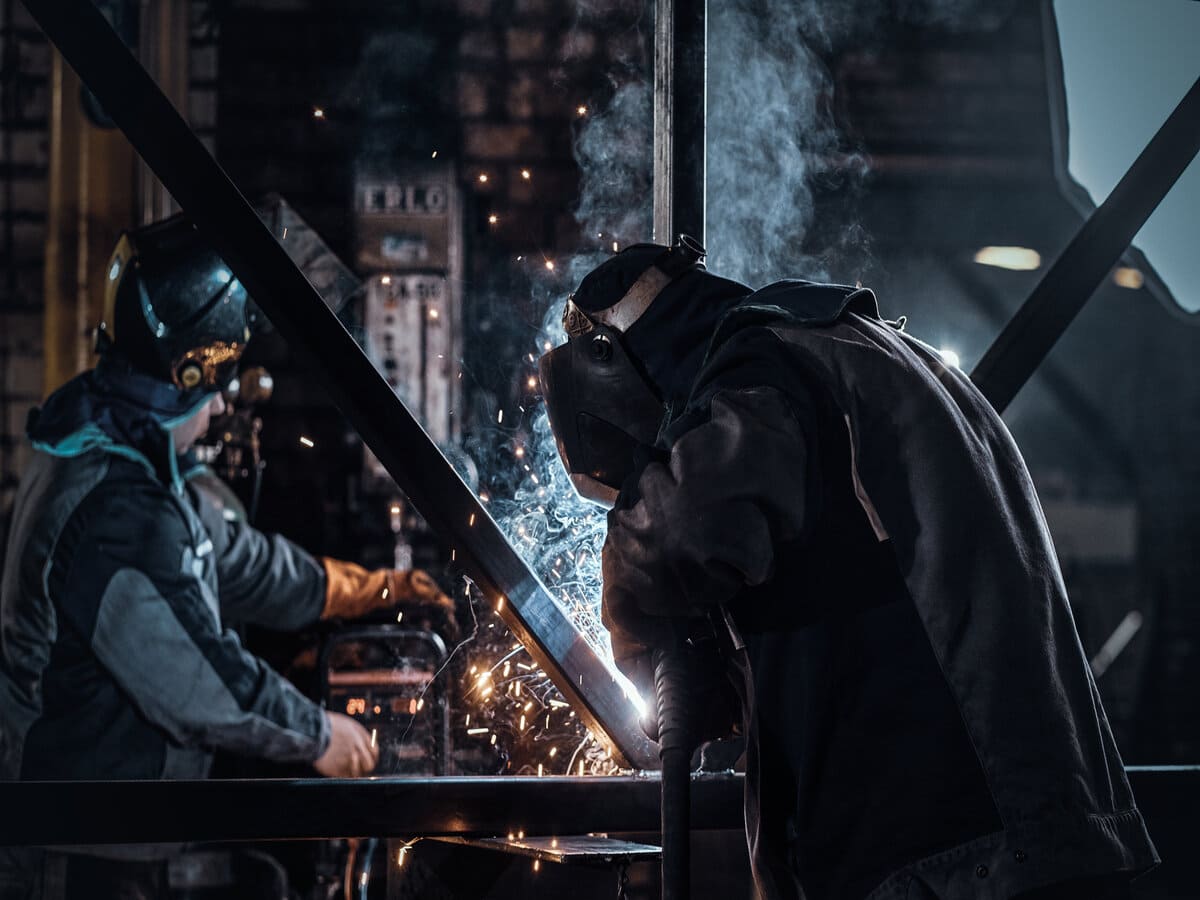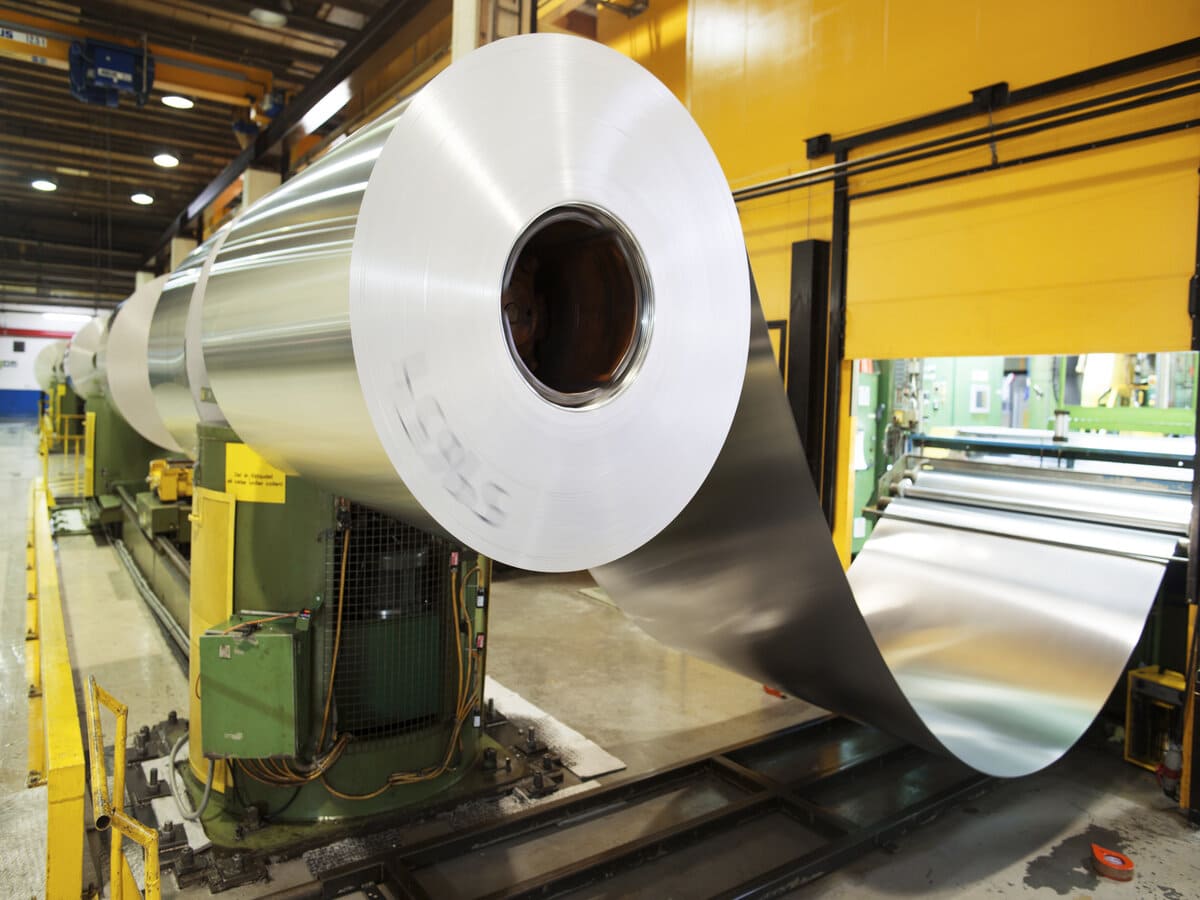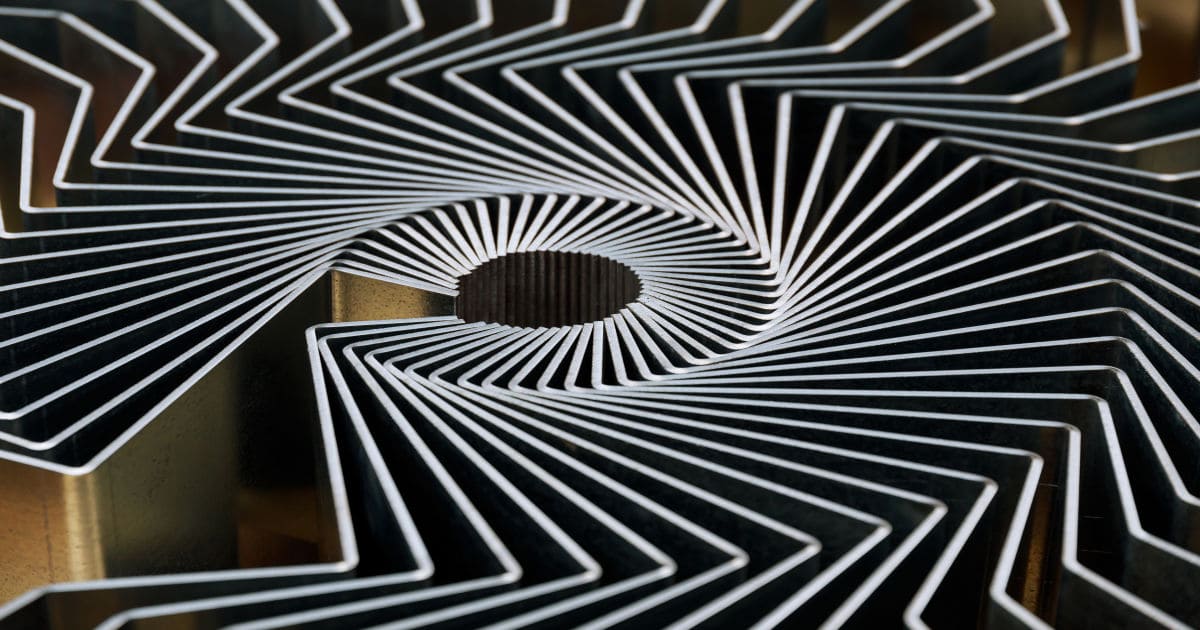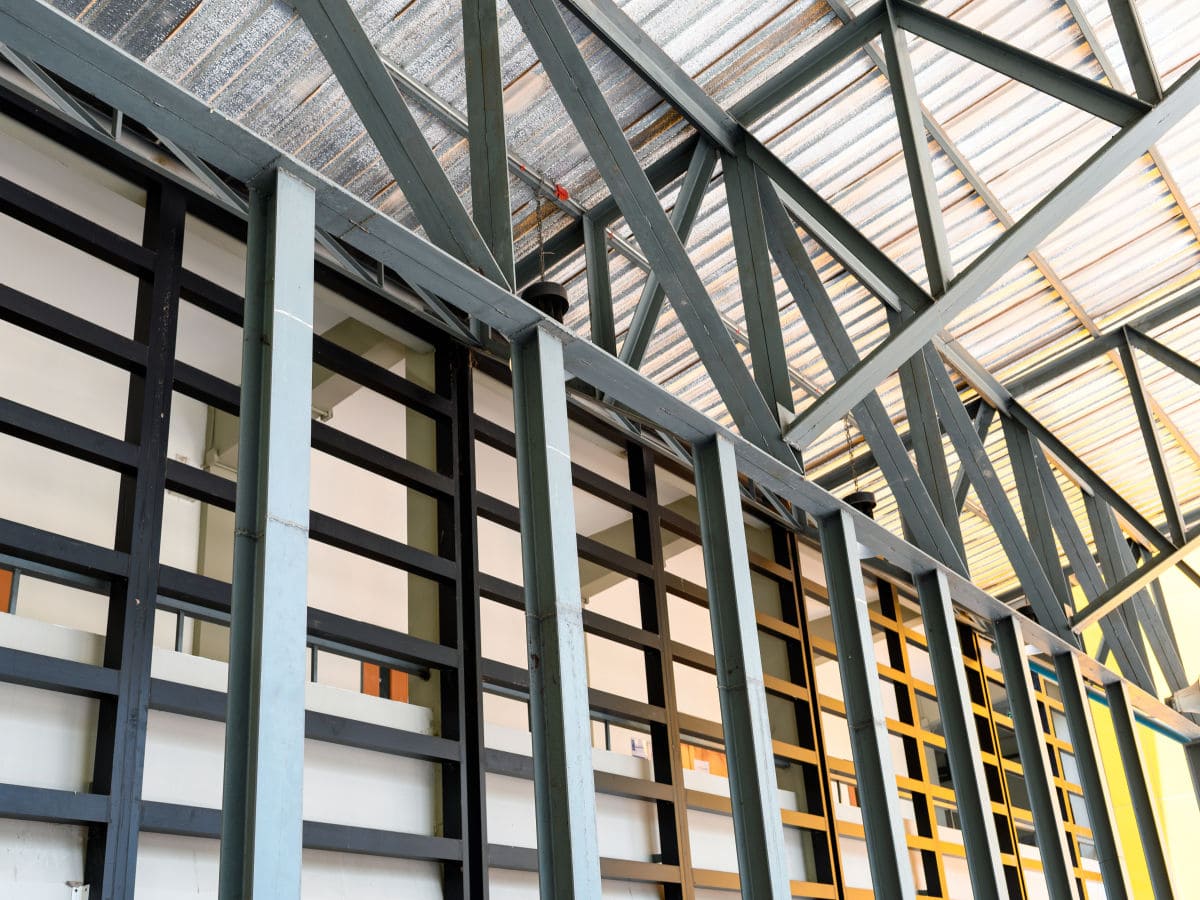Metal fabrication is the art and science of building metal structures. It is done by cutting, bending, and assembling. It’s a complex process that turns raw metal materials into predefined shapes and sizes, integral to countless industries, from construction to automotive. Precision and durability are paramount in this field, as the final products are often foundational to the structures and machines they become part of.
Powder coating emerges as a modern finishing technique where dry, free-flowing powdered paint is applied to a surface, typically metal. Unlike traditional wet paints, this method uses an electrostatic charge to adhere the powder to the surface before curing it in an oven, resulting in a tough, uniform coating. Its unique application process and resultant properties mark a significant advancement in surface finishing technology.
While traditional liquid painting has its merits, powder coating offers a compelling suite of benefits that enhance the efficiency and outcome of metal fabrication. This article will explore how powder coating contributes to the longevity, aesthetic appeal, and functional superiority of metal fabricated products, along with its economic and environmental implications, positioning it as a highly beneficial methodology in the metal fabrication industry.
Historical Context
Traditional painting methods have long been the cornerstone of finishing in the metal fabrication industry, with techniques such as spray painting, dipping, and hand brushing dominating the field. These methods, developed over centuries, have provided a range of finishes, from protective coatings to aesthetically pleasing surfaces. However, they’ve also carried inherent drawbacks, including uneven coverage and the release of volatile organic compounds (VOCs), which pose environmental and health concerns.
In contrast, the rise of powder coatings represents a significant leap forward. It began in earnest in the 1960s as industry professionals sought more efficient, durable, and environmentally friendly alternatives. The evolution of this technology has been driven by advancements in chemical compositions and application equipment, enabling powder coatings to offer superior durability and finish quality while reducing environmental impact. This progressive shift reflects the industry’s ongoing commitment to innovation and sustainability.
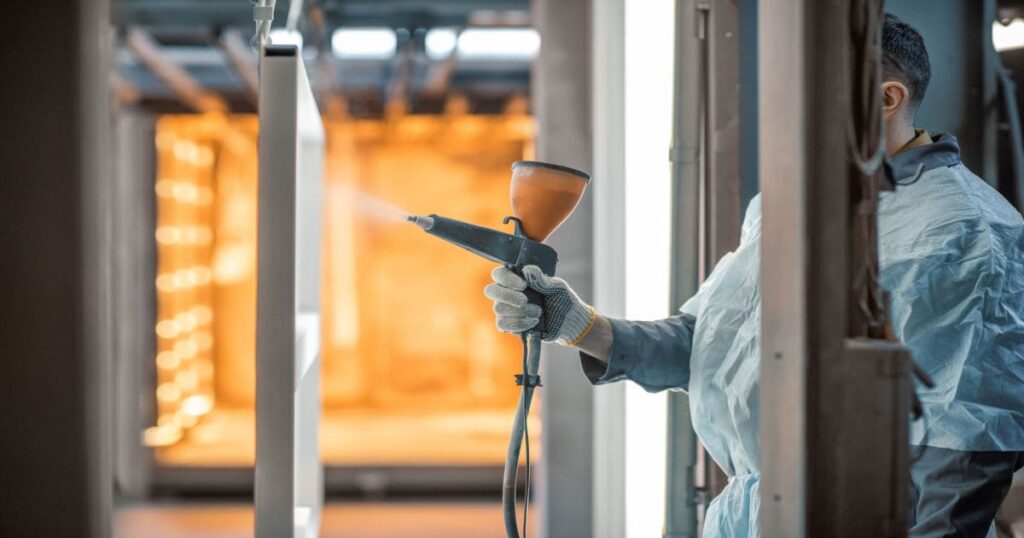
What is Powder Coating?
Composition and Types of Powder Coatings
Powder coating is a blend of finely ground particles of pigment and resin, which form a powder-like substance, ideal for creating a durable and protective finish. There are two primary types: thermoplastic coatings, which become soft when heated, and thermoset polymers, which chemically cross-link during curing to form a permanent structure. These types are chosen based on their specific properties, like chemical and heat resistance, to suit various industry applications.
The Powder Coating Process Explained
The process of applying powder coating is distinct and methodical. It begins with the surface preparation of the metal, which is crucial for a clean, adherent coating. The powder is then applied electrostatically, ensuring it clings to the metal surface before being cured in a high-temperature oven. This curing process creates a long-lasting bond between the coating and the metal, producing a high-quality finish.
Differences Between Powder Coating and Liquid Paint
Powder coating diverges significantly from liquid paint in both application and performance. While liquid paint requires a solvent to keep the binder and pigment in a liquid suspension, powder coating uses dry powder. This fundamental difference means that powder coating does not emit VOCs as it cures, presenting a safer and more environmentally friendly option. Additionally, powder coating typically provides a thicker, more consistent finish that resists chipping, scratching, and corrosion better than conventional paint.
Economic Benefits
Cost-Effectiveness Over Time
Powder coatings are lauded for their long-term economic efficiency. The initial investment in powder coating technology can be offset by the durability of the finish, which reduces the need for reapplications. Additionally, the minimal maintenance requirements extend the life of the finished product, making powder coatings a cost-effective solution in the long run.
Reduction in Material Waste
The precision of the powder coating process leads to a significant reduction in material waste. Excess powder can be collected and reused, unlike liquid paints that, once mixed, have a limited pot life. This efficiency not only cuts down on material costs but also minimizes the environmental impact of the fabrication process, contributing to a more sustainable production model.
Lower Energy Requirements Compared to Traditional Methods
Compared to traditional liquid painting, powder coating requires less energy. The curing process is quicker and can be conducted at lower temperatures, leading to energy savings. The absence of solvents also eliminates the need for large-scale ventilation systems, which further reduces energy consumption and costs associated with operating paint booths.
Economic Incentives for Eco-Friendly Practices
Businesses may benefit from governmental or industry-related incentives for adopting eco-friendly practices like powder coating. These can include tax credits, rebates, and grants that can help offset the upfront costs of powder coating equipment. Moreover, companies that incorporate sustainable practices often enjoy an enhanced reputation, which can translate to increased business opportunities and customer loyalty.
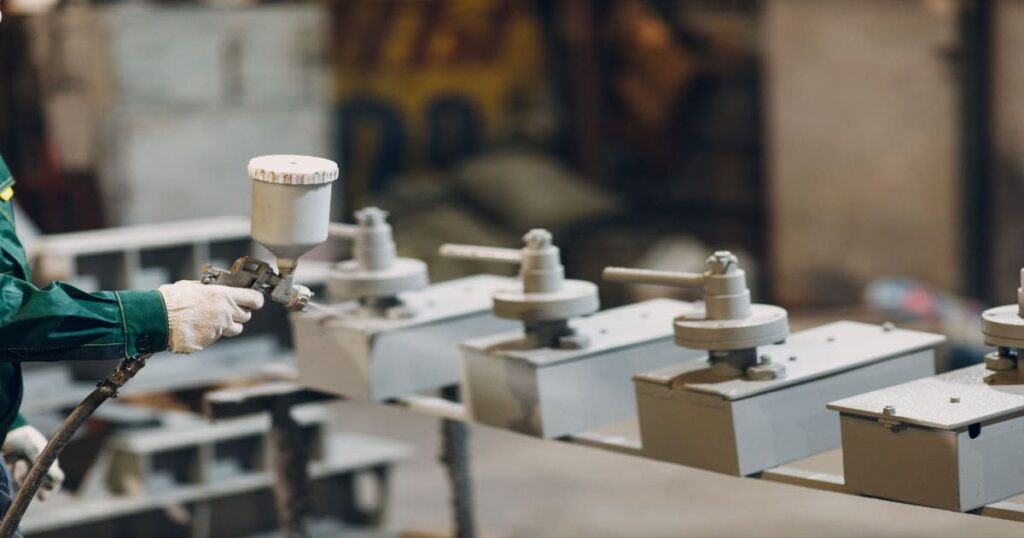
Durability and Performance
Enhanced Durability of Powder Coatings
Powder coatings are renowned for their superior durability compared to traditional paints. The thermosetting nature of powder coatings means they are less prone to breakdown over time. When cured, these coatings form a hard finish far tougher than conventional paint, making them less susceptible to deterioration from regular use and environmental exposure.
Resistance to Scratching, Chipping, and Corrosion
One of the most compelling attributes of powder coatings is their resistance to damage. They can withstand heavy impacts, scratches, and chipping far better than liquid coatings. This robustness extends to corrosion resistance, which is particularly important in preventing the degradation of metal surfaces in corrosive environments, such as those exposed to salt water or industrial chemicals.
Longevity of Powder-Coated Surfaces
The lifespan of powder-coated surfaces is significantly longer than those treated with traditional liquid paints. This longevity not only provides a sustained aesthetic appeal but also reduces the frequency of re-coating, translating into savings on maintenance and labor over time. The longevity of the coating reinforces the cost-effectiveness and reduces the environmental footprint.
Performance in Various Environmental Conditions
Powder coatings stand up to various environmental conditions with remarkable resilience. They are less likely to fade under ultraviolet light, less susceptible to cracking in extreme temperatures, and maintain their integrity in the face of harsh weather. This reliability across different climates and conditions makes powder coatings an ideal choice for outdoor and industrial applications.
Environmental Advantages
Reduction in Volatile Organic Compounds (VOCs)
Powder coatings offer a significant environmental advantage by substantially reducing the emission of volatile organic compounds (VOCs). Unlike solvent-based liquid paints, powder coatings do not require a liquid carrier that evaporates into the atmosphere, thus curtailing the release of these harmful chemicals. This reduction supports better air quality and contributes to a healthier ecosystem.
Compliance with Environmental Regulations
The environmentally friendly profile of powder coatings ensures that manufacturers can comply more easily with stringent environmental regulations. As governments worldwide tighten legislation on VOC emissions and waste disposal, powder coatings provide a compliant alternative to negate the need for costly emission control equipment and avoid hefty regulatory fines.
Recyclability of Overspray
Powder coating processes are designed to maximize the use of materials, and any overspray can be reclaimed and reused, reducing waste. This recyclability is a significant step towards sustainable manufacturing, allowing for nearly 100% utilization of the coating material and minimizing the waste sent to landfills.
Safety for Workers and the Surrounding Community
The health and safety benefits of powder coatings extend to the workplace. The absence of toxic solvents and chemicals not only makes the application process safer for workers but also reduces the risk of contamination and pollution in the surrounding community. This commitment to safety can also enhance the manufacturer’s reputation as a responsible and sustainable operation.
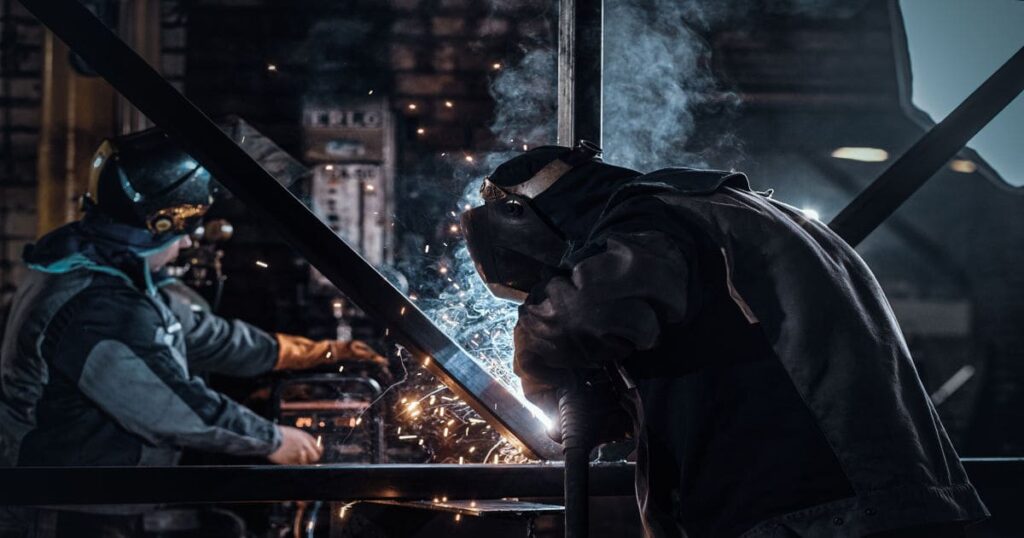
Aesthetic and Finish Quality
Range of Textures and Finishes Available
Powder coatings offer an extensive range of textures and finishes that are simply not achievable with traditional liquid paints. Manufacturers can choose from smooth, matte, satin, high-gloss, or textured finishes to suit specific product needs. These textures not only add to the visual appeal but can also provide functional benefits, such as enhanced grip or reduced surface scratches, catering to a wide array of industry requirements.
Consistency in Color and Appearance
One of the standout features of powder coating is its ability to produce consistently vibrant and uniform colors. The application process ensures that the finish is free from the common problems associated with liquid paints, such as running or sagging, resulting in an even coat. Moreover, powder-coated surfaces maintain their color and gloss levels excellently over time, resisting fading and keeping their like-new appearance for longer periods.
Flexibility in Design and Customization
The adaptability of powder coatings in terms of design and customization is unmatched. Designers can work with a broad palette of colors and special effects, including metallics, fluorescents, and clear coats. The technology also allows for custom color matching, essential for corporate branding or when components need to complement other elements in product design. This flexibility empowers designers to bring their most ambitious visions to life while maintaining the functional benefits of durability and environmental resistance.
Application Efficiency and Time Savings
Quicker Curing Times
Powder coatings are highly efficient, primarily due to their rapid curing times. Once the powder is applied, the curing process transforms it into a uniform film in minutes, a drastic reduction compared to the hours or days required for liquid paints to dry. This efficiency allows for a faster turnaround in production cycles, enabling manufacturers to complete more orders in less time.
One-Coat Coverage Possibilities
The one-coat coverage capability of powder coatings is a significant time-saver. Unlike multiple coats often necessary with liquid paint to achieve full coverage and optimal finish quality, powder coating often requires just a single coat. This not only speeds up the application process but also reduces the time spent on inspections and touch-ups.
Streamlined Production Process
Incorporating powder coating into the production process results in a more streamlined operation. The need for fewer layers and a quick curing time means products can move through the coating stage more rapidly, reducing bottlenecks and increasing overall efficiency. Additionally, the ease of cleaning and quick color changes in powder coating systems minimize downtime between jobs, further optimizing the production workflow.
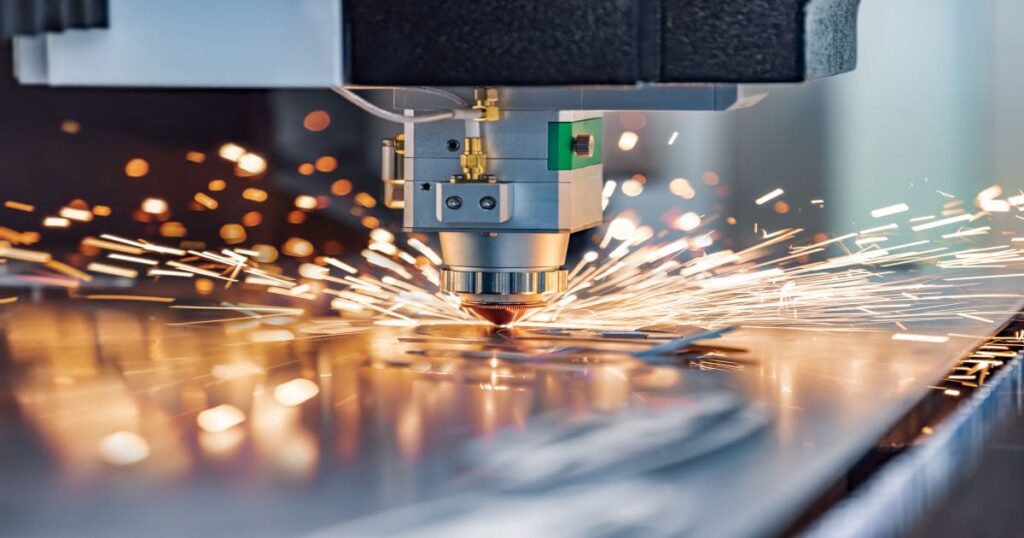
Versatility
Use Across Various Industries
Powder coating’s versatility is showcased in its broad adoption across numerous industries, from automotive and aerospace to furniture and consumer electronics. Each sector benefits from its ability to provide a durable, high-quality finish that can withstand the rigors of different environments. This widespread use is a testament to powder coating’s adaptability and performance, making it a preferred choice for businesses aiming for excellence in finish and durability.
Suitability for a Range of Metal Substrates
Powder coatings are suitable for a wide range of metal substrates, including steel, aluminum, and alloys, which are common in industrial manufacturing. Powder coatings can be tailored to adhere to different metal types, offering protection and enhancing the material’s natural properties. This versatility ensures that regardless of the metal used, there is a powder-coating solution that can optimize its appearance and lifespan.
Adaptability for Large-Scale and Custom Jobs
Powder coating is adaptable, scaling easily from large batch productions to single, custom jobs. Its consistent finish across various shapes and sizes makes it ideal for handling large-scale manufacturing runs with stringent quality requirements. At the same time, the process is equally suitable for custom or bespoke items, which demand a high level of detail and customization. Whether for mass-produced components or one-off specialty pieces, powder coating offers the flexibility to meet diverse customer demands.
Maintenance and Care
Ease of Cleaning and Maintenance
Powder-coated surfaces are renowned for their ease of maintenance, primarily due to their resistance to stains, scratches, and corrosion. Routine cleaning usually requires only mild detergent and water, making the process straightforward and efficient. The non-porous nature of the coating means that dirt, debris, and spills can be wiped away without the need for aggressive chemicals or abrasives, preserving the integrity of the finish.
Lower Maintenance Costs Over Time
The inherent durability of powder coatings translates to lower maintenance costs over the product’s lifespan. The need for repainting, touch-ups, and corrosion control is significantly reduced, if not eliminated. This longevity not only represents a cost-saving for consumers but also reflects well on the reputation of manufacturers who prioritize quality and durability in their products.
Tips for Maintaining Powder-Coated Surfaces
Regular cleaning to remove surface debris, avoiding harsh chemicals, and immediate attention to any chips or scratches can prolong the life of the coating. It’s also advisable to use wax treatments for an added layer of protection, especially in harsh outdoor environments, to keep the coated items looking fresh and new for years to come.
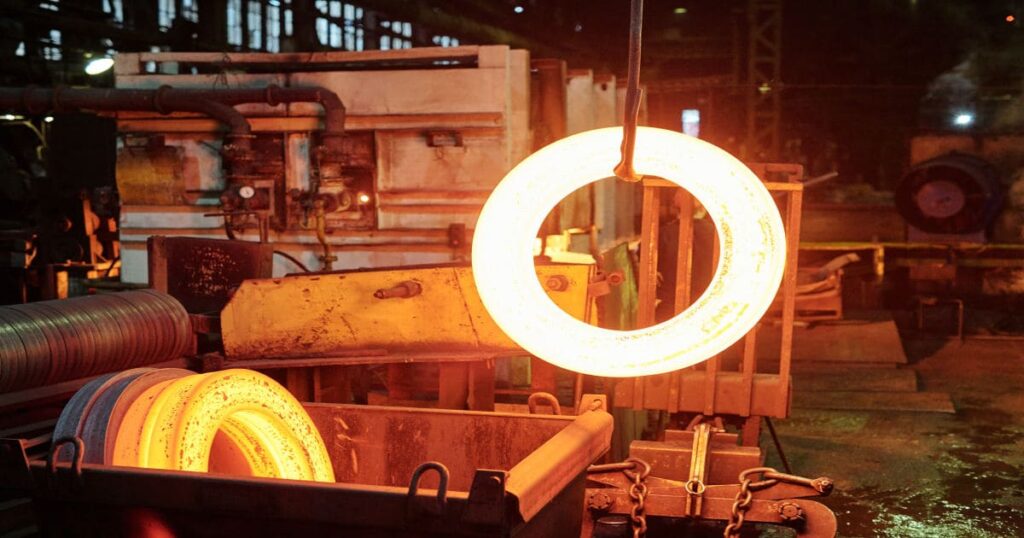
Challenges and Considerations
Initial Setup Costs
While powder coating brings numerous advantages, one must consider the initial setup costs. Implementing a powder coating system requires a significant upfront investment in equipment such as spray booths, curing ovens, and electrostatic spray guns. Additionally, training technicians to efficiently operate this equipment and manage the powder coating process adds to the initial expenses. These costs, however, can be recouped over time through the process’s efficiency and the long-term savings it generates.
Limitations in Color Blending
Powder coating does have its limitations, particularly when it comes to achieving certain colors and finishes. The colors are pre-set, and custom colors can be costly and time-consuming. This problem can be when trying to match colors and requires careful planning with powder suppliers.
Special Considerations for Repair and Touch-Ups
Repairing and touching up powder-coated surfaces requires a different approach compared to traditional paint finishes. Matching the original color and texture can be challenging, especially after the coated item has been exposed to environmental conditions. It is often recommended that any repair work be carried out by professionals. This ensures that the repaired area blends seamlessly with the original coating.
Looking Forward
Technological Advancements in Powder Coating
The horizon for powder coating technology is bright, with ongoing advancements that promise even greater efficiency and versatility. Innovations in powder formulation produce finer, more uniform particles that adhere better and create smoother finishes. Equipment enhancements are also on the rise. New designs in application guns and recovery systems promise to make the powder coating process faster.
Future Trends in Metal Fabrication and Environmental Sustainability
In the realm of metal fabrication, the trend is unmistakable tilting towards environmentally sustainable processes. Powder coating is at the forefront of this shift, with research focusing on developing eco-friendly formulations that deliver high-quality finishes. As sustainability becomes increasingly integral to industrial practices, powder coating is poised to become a standard. It is driven by its minimal environmental impact and alignment with global environmental standards.
The Enduring Impact of Powder Coatings
In closing, powder coatings have distinctly reshaped the landscape of metal fabrication. It offers a robust suite of benefits that include enhanced durability, economic savings, and a reduced environmental footprint. The industry stands on the cusp of wider adoption. There is a potential for powder coatings to become a new standard for quality and sustainability. Manufacturers and consumers alike are encouraged to embrace this technology.
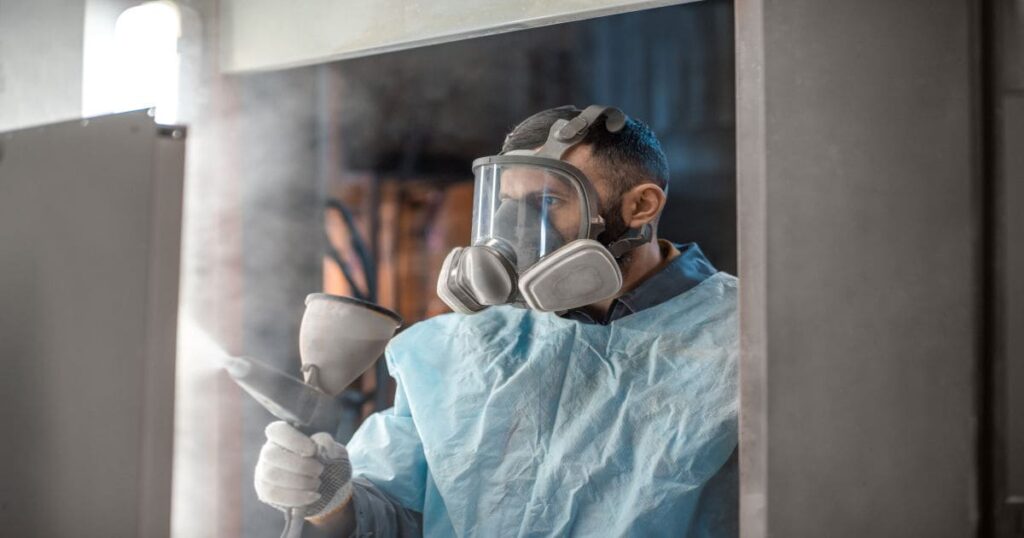
Frequently Asked Questions
Can Powder Coatings Be Applied to Materials Other than Metal?
Yes, while metal is the most common substrate, powder coatings can also be applied to other materials.
How Does the Weather Affect Powder-Coated Items?
Powder-coated items are generally weather-resistant and fare well against the elements. However, prolonged exposure to extreme conditions can lead to wear over time. Specific powder types are formulated for high UV resistance or corrosion protection in harsh climates.
Is Powder Coating Resistant to Heat and Fire?
Powder coatings are heat resistant up to a point, which varies depending on the formulation. Some powders are designed to withstand higher temperatures and can be used on grills and engine parts.
How Does Powder Coating Contribute to a Product’s Overall Value?
By enhancing durability and finish quality, powder coating can increase the perceived value of a product. It also contributes to longer product life and reduced maintenance, providing added value to the customer.
How Environmentally Friendly is the Powder Coating Process?
The powder coating process is environmentally friendly due to the absence of VOCs, and reduced waste through recyclable overspray.
